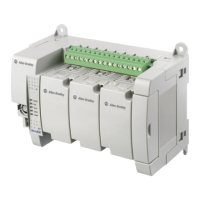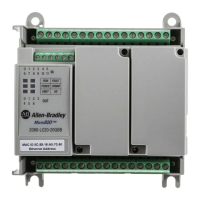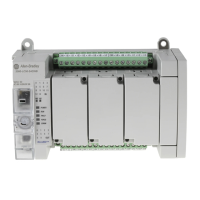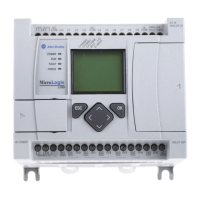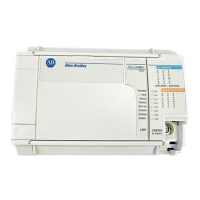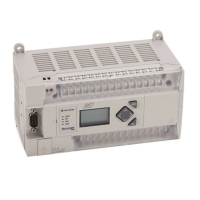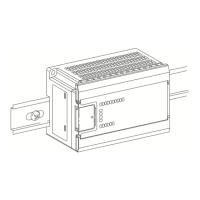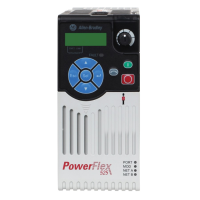Rockwell Automation Publication 2080-UM002K-EN-E - March 2019 323
PID Function Blocks Appendix F
TimeIntegral REAL Time integral value for PID (>= 0.0001).
Time integral value for PID
A smaller integral time constant causes a faster change in the output
based upon the difference between the PV (measured process value)
and SV (set point value) integrated over this time. A smaller integral
time constant decreases the steady state error (error when SV is not
being changed) but increases the chances of instability such as
oscillations. A larger integral time constant slows down the response
of the system and make it more stable, but PV approaches the SV at a
slower rate.
TimeDerivative REAL Time derivative value for PID (> 0.0).
Time derivative value for PID (Td)
A smaller derivative time constant causes a faster change in the
output based upon the rate of change of the difference between PV
(measured process value) and SV (set point value). A smaller
derivative time constant makes a system more responsive to sudden
changes in error (SV is changed) but increases the chances of
instability such as oscillations. A larger time constant makes a
system less responsive to sudden changes in error and the system is
less susceptible to noise and step changes in PV. TimeDerivative (Td)
is related to the derivative gain but allows the derivative contribution
to PID to be tuned using time so the sample time must be taken into
consideration.
DerivativeGain REAL Derivative gain for PID (>= 0.0).
Derivative gain for PID (D_Gain)
A higher derivative gain causes a larger change in the output based
upon the rate of change of the difference between the PV (measured
process value) and SV (set point value). A higher gain makes a system
more responsive to sudden changes in error but increases the
chances of instability such as oscillations. A lower gain makes a
system less responsive to sudden changes in error and makes the
system less susceptible to noise and step changes in the PV.
If derivative gain is set to zero, it disables the derivative
portion of the PID.
AT_Param Data Type
Parameter Type Description
Load REAL Load parameter for auto tuning. This is the output value when
starting AutoTune.
Deviation REAL Deviation for auto tuning. This is the standard deviation used to
evaluate the noise band needed for AutoTune (noise band = 3*
Deviation)
(1)
(1) The application engineer can estimate the value of ATParams.Deviation by observing the value of Proces input.
For example, in a project that involves the control of temperature, if the temperature stabilizes around 22 °C,
and a fluctuation of 21.7…22.5 °C is observed, the value of ATParams.Deviation will be (22.5-21.7)/2=0.4.
Step REAL Step value for AutoTune. Must be greater than noise band and less
than ½ load.
ATDynamSet REAL Waiting time in seconds before abandoning auto tune.
ATReset BOOL Determines whether the output value is reset to zero after an
AutoTune sequence:
TRUE = Reset output to zero.
FALSE = Leaves output at Load value.
GAIN_PID Data Type
Parameter Type Description
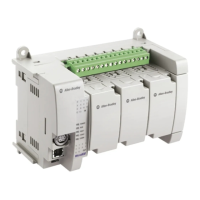
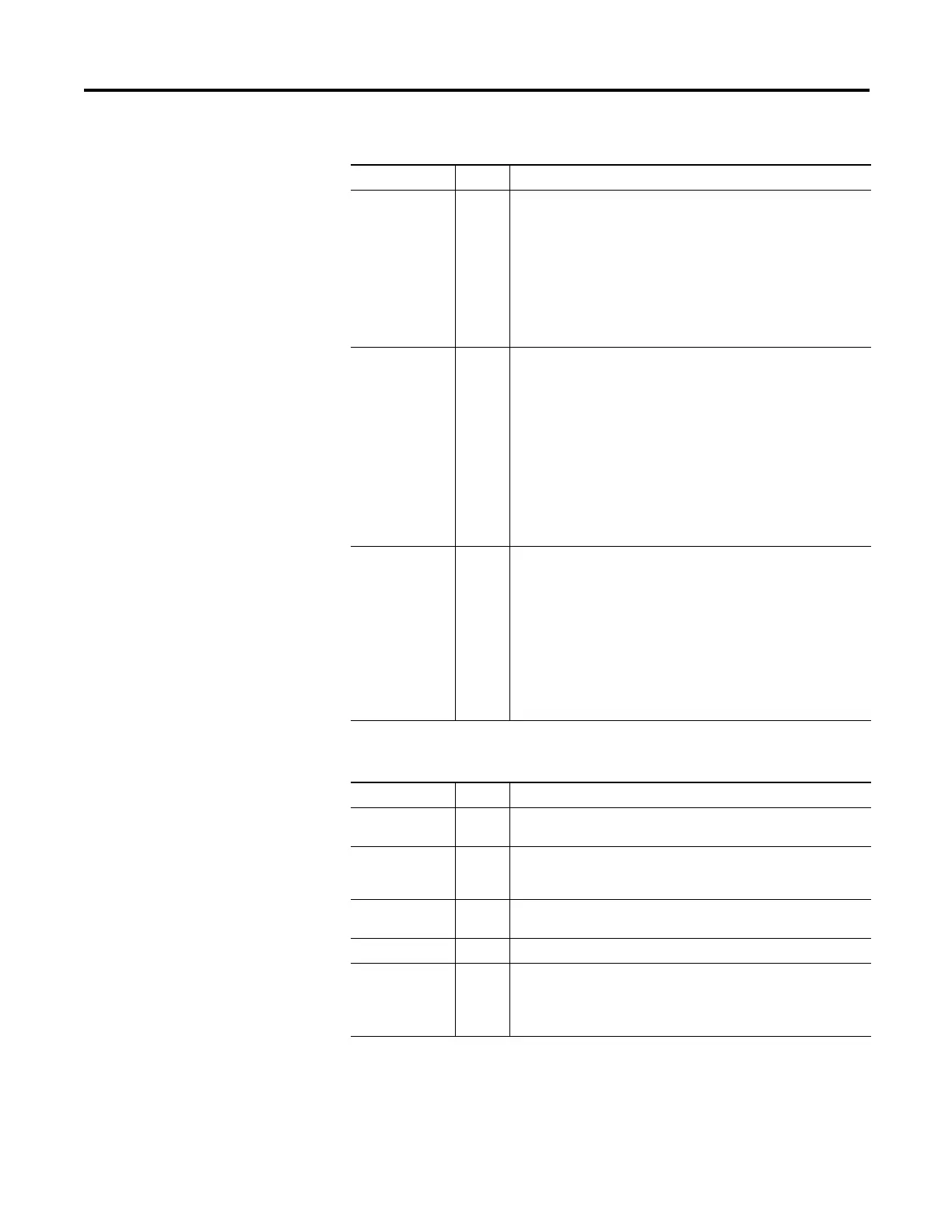